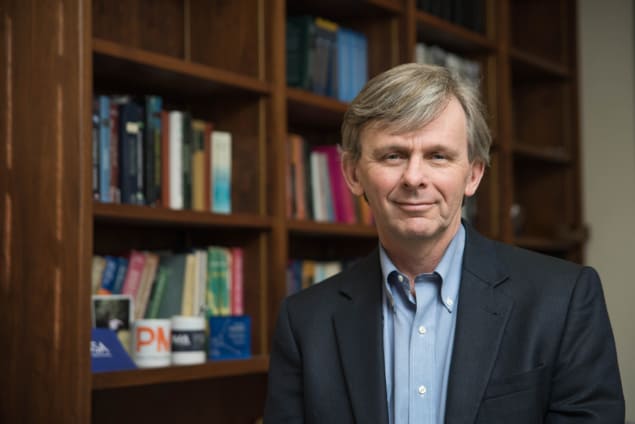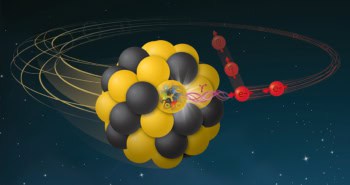David Reitze, executive director of the Laser Interferometer Gravitational-Wave Observatory, talks to Richard Blaustein about how gravitational-wave observations are set for a multi-detector boost

How has the COVID-19 pandemic affected work on the twin Laser Interferometer Gravitational-Wave Observatory (LIGO)?
We were near the end of the our third observing run, which was planned to end on 30 April, when the pandemic hit. COVID-19 forced us to shut down all operations at the LIGO observatories – located at Hanford, Washington and Livingston, Louisiana – on 27 March, about a month shy of the planned end date. Still, the run was a great success, with 56 gravitational-wave candidates detected in 11 months – about one each week. We’re now initiating a programme to install a series of detector upgrades, which we call Advanced LIGO Plus (A+), over the next 20 months that will result in gravitational-wave detections every one or two days. Even working remotely, the LIGO team has made good progress on LIGO A+ in the past few months.
When do you expect to restart operations on LIGO?
We tentatively resumed observatory work last month since it was safe to do so and we have established protocols to execute the upgrade programme in a safe and socially distant way.
LIGO consists of over 150 institutions and more than 1300 people from around the world. Would the observatory be possible without such an international scope?
I don’t think so, for many reasons. The California Institute of Technology and the Massachusetts Institute of Technology are the institutions that built and operate LIGO. However, to design and use LIGO effectively you need to look beyond the US. So we looked to where the best science is being done. And historically – 30 or 40 years ago – you find some of the best ideas for interferometry were emerging from Australia, Italy, Germany, the UK and other places. Without these ideas and the people who developed and brought those ideas to maturation I don’t think we could have ever built LIGO, made it work and carried out its scientific programme.
The binary neutron-star merger was spectacular in so many ways. It became evident very quickly that this was a first-of-its-kind event.
How does the collaboration work with the European laser-interferometer gravitational-wave detector, situated near Pisa, Italy?
Virgo is a different detector from LIGO, built by an independent set of people. The LIGO scientific collaboration joined forces with Virgo in 2007 because of the realization that by combining our data, we could get much more information, particularly in the ability to locate gravitational events in the sky. This international collaboration has greatly expanded our ability to detect gravitational waves and understand where they come from, and allows us to make strong astrophysical statements about what we see.
Japan recently opened the KAGRA gravitational-wave detector and there are plans for an observatory in India. How will this enhance gravitational-wave science?
Having three separate interferometers far away from each other provides a better ability to localize signals over a portion of the sky. By putting a fourth detector in Japan and a fifth detector in India, we’ll be able to rapidly determine good sky localization for gravitational-wave events anywhere in the sky. This is a wonderful thing, because one of our core goals is to tell astronomers that we saw an event in this portion of the sky and they should look at it quickly because they’ll see something very dramatic. This is really what multimessenger astronomy is all about.
What other benefits are there of having multiple detectors?
These detectors are exquisitely sensitive and easily perturbed by small things such as a malfunction in the detector or even somebody driving a truck nearby. By having more detectors, even if you have one or two of them offline, you still get reasonable sky coverage. Redundancy in the network makes a big difference.
Given the impact of COVID-19, are you still keeping in touch with KAGRA and VIRGO?
Yes. Virgo concluded its third observation run at the same time as LIGO. It is now back in limited operations and resuming its Advanced Virgo Plus upgrade programme. The KAGRA collaboration continues to commission its detector and successfully held its inaugural two-week long observing run in April. KAGRA will join LIGO and Virgo in the fourth observation run that is scheduled to begin in early 2022. Equally important, the LIGO–Virgo collaboration is analysing the third observing run data set and continuing to find merging binary systems that are challenging our understanding of neutron star and black hole populations. Stay tuned for new results coming out very soon. LIGO–Virgo claims another neutron-star merger
The detection of the first neutron-star merger in 2017 opened up the era of multimessenger astronomy. What did it tell us about the universe?
The binary neutron-star merger was spectacular in so many ways. First and foremost, it fundamentally answered a lot of scientific questions such as that binary neutron-star mergers produce short-order gamma-ray bursts and that they also produce unique conditions in which heavy elements in the periodic table such as gold and platinum are forged.
It must have been incredibly exciting at the time?
It became evident very quickly that this was a first-of-its-kind event. Over the following days, weeks and months, the astronomical community kept looking at the data because, if you pardon the pun, it was such a scientific gold mine. You see gamma rays that go away very quickly, then you see ultraviolet and optical and infrared. Then there is a point when X-rays are emitted as the neutrons hit the interstellar medium. The radio emissions going on for months and months.



